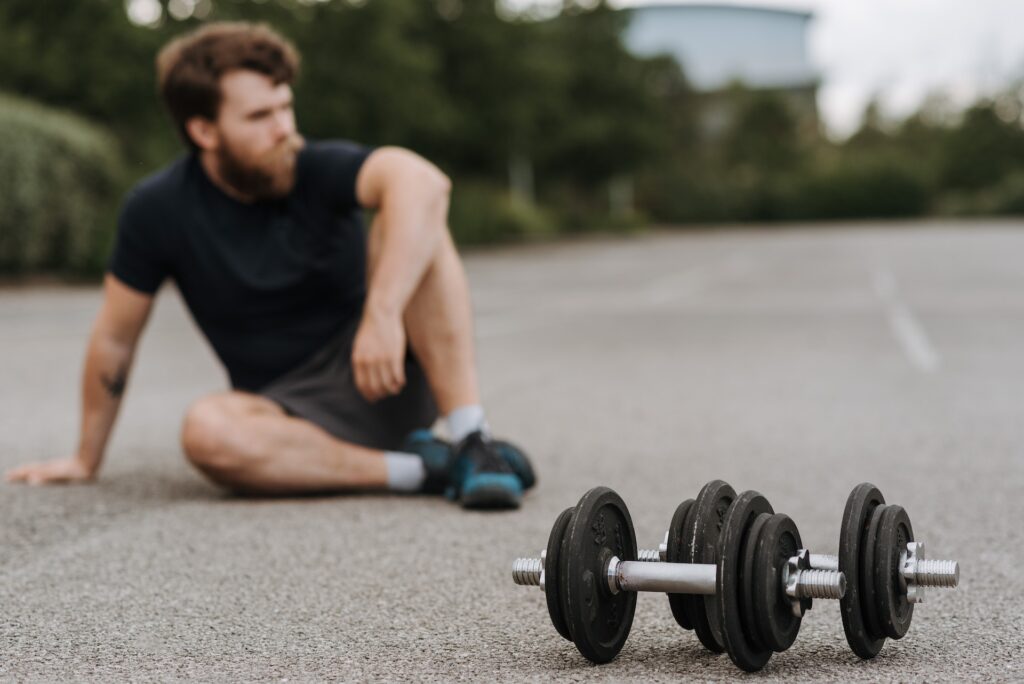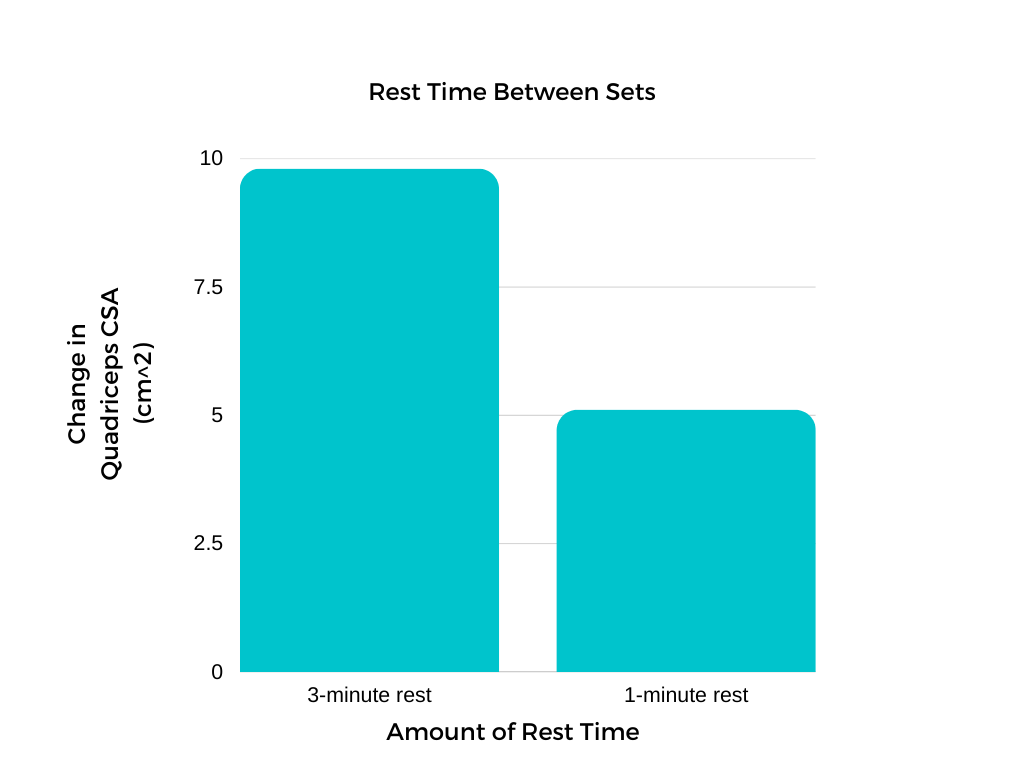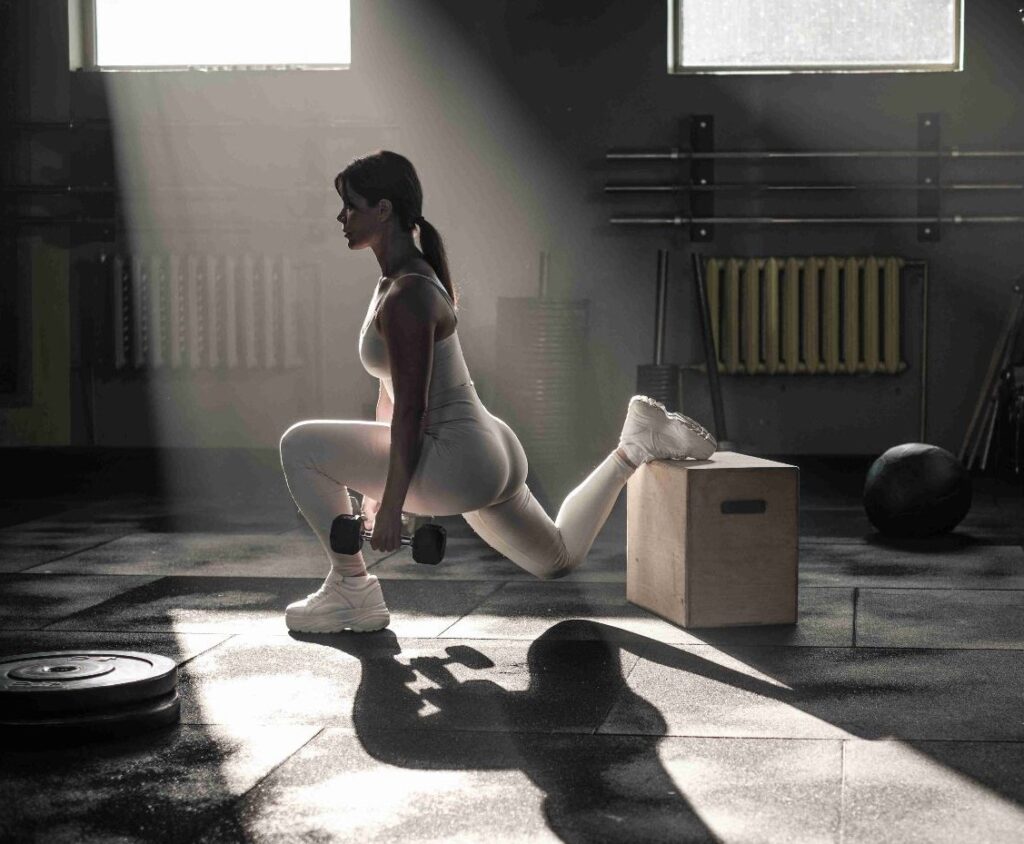
Having trouble finding equipment to hit legs? Here is the perfect dumbbell leg workout!
Dumbbell-only leg workouts can be surprisingly simple, with only one piece of equipment required.
We all try to find as many excuses as we can to avoid hitting legs. Having no machines is not a valid one! These exercises can easily provide leg workouts at home.
As a matter of fact, leg workouts may not even require a single dumbbell — check out this page to learn more about the best bodyweight leg workouts.
However, thinking of ways to leverage the leg with just a dumbbell leg workout can be challenging…especially with how great some machines are at achieving hypertrophy in the legs.
This requires some outside of the box thinking.
Luckily the exercises shown on this page are extremely easy and can provide efficient muscular for growth for people of any fitness level!
Dumbbell leg workouts are extremely versatile.
Beginners can simply remove the dumbbell and more experienced lifters can easily increase the weights and/or reps.
Leg Day Basics
There are 4 main muscle groups in the legs that need to be specifically targeted for most individuals.
- Quadriceps
- Hamstrings
- Glutes
- Calves
Other minor muscle groups exist, but the exercises listed will hit them enough to grow.
All of those muscle groups with be covered in these exercises.
There are still many fundamentals that go into a great leg day, the exercises alone are not enough.
Things like sets per week, reps per set, and rest times are all critical points to master.
These areas can be applied across most muscle groups throughout the body and should be covered in depth (which you can find here), but for the purposes of this post, we will cover them briefly.
Sets Per Week
The number of sets per week is one variable that can differ for muscle groups in the body.
Luckily, there was a fantastic study conducted that tested subjects working out their legs 12, 18, and 20 sets per week. This study found that subjects performing 12 sets had the largest growth of muscle size. The study also found that subjects working in the 18 set range for the week had the largest increase in strength. You can find that study by clicking here.
If your goal is to increase muscle size, 12 sets a week is your best option.
If your goal is to increase your strength, 18 sets per week is better for you.
Of course, if either number is too large for you, the most important thing is to listen to your own body. We all have different levels of recoverability.
Reps Per Set
The next item to cover would be the amount of reps per set.
Many research studies have been conducted on this topic, with them all coming to a similar conclusion. Similar muscle growth is seen from sets performed with 5 reps all the way to 35 reps. Research for this can be found here.
What conclusions can be drawn from this? Do as little as reps as possible to achieve the maximum amount of muscle growth, while expending the least amount of energy possible. This means to perform your sets in a 5-10 range, getting close to muscular failure each set.
With a dumbbell leg workout, this can be difficult as there may be a lack of equipment. Without heavy enough weights, you may not be able to fully exhaust the muscle within 5-10 reps. As the study showed, anywhere from 5-35 reps per set is ok, as long as you are getting close to muscular failure.
Rest Times

The final fundamental that goes into creating a perfect dumbbell leg workout is rest time between sets.
A graph put together from the results in this study clearly shows that 3-minute rest periods are significantly better than 1-minute rest periods.
To sum up the tips for the ultimate leg destroying dumbbell workout:
The Best Dumbbell Leg Workouts
1. Goblet Squats
Form
A Goblet Squat has many similarities to every squat variation. It is a movement that can excel not only in a dumbbell leg workout, but in your everyday workout at the gym.
They key difference being the dumbbell is being held by the arms, in front of the body, as shown in the video.
As usual with any squat variation, the goal is to sit back like you’re sitting in a chair.
Keep that back straight and get the knees bending down to a 90 degree angle, where the tension will be the greatest on the quad. To isolate the quads further, bend the knees over your toes as much as possible to maximize knee flexion. This will place the most amount of tension on the quad.
A nice slow descent on the way down, followed by an explosion back to the top of the movement will yield the best gains.
One big positive of the Goblet Squat is the stability of the movement. With a traditional barbell back squat, lifters can feel as if they’re falling backwards towards the bottom of the movement, leading to poor stability, which means less muscle growth.
With a Goblet Squat, the dumbbell is in the front of the body which leads to much better balance and stability in the movement. This enables the lifter to get further down in their squat, especially if they have hip and ankle mobility issues. Check out this post here to learn more about improving ankle and hip mobility for more muscle gains.
The only issue with the Goblet Squat is your ability to hold a heavy enough dumbbell to provide enough burn to the muscle. This is the limiting factor of the movement, which could give other squat variations the edge over the Goblet Squat.
As with most things in fitness, there is not a one size fits all movement, and if the Goblet Squat is an exercise that works well for you that is all that matters.

Muscle Cues
As with any exercise, developing the mind muscle connection is essential for achieving maximum muscle growth.
If you can feel other squat variants in the desired muscle in the leg, chances are the Goblet Squat will be easy to pick up on.
Normally with a squat, we’re told to push only with the heels. Since the Goblet Squat shifts our center of gravity, it’s okay to push off the ground with the mid to front part of your foot.
This should help you feel the burn in the quads.
If you are struggling to feel the movement in the quadricep, just try practicing without any weight. Try to touch your quadriceps on the way down, really trying to connect with the muscle.
Once you feel like the targeted muscle is being worked, pick up a lighter dumbbell than you would normally use and slowly work your way back up to performing a normal set.
One tip that can improve the Goblet Squat for those struggling with the movement is to slide 5-pound weight plates underneath the heel, angling the foot downward.
This increases the knee flexion of the movement at the bottom, which leads to more tension on the quad, increasing the muscle growth and efficiency of the exercise.
A squad variation is an essential staple in any dumbbell leg workout for mass.
2. Bulgarian Split Squats
Form
Split Squats are one of the most feared dumbbell leg workouts out there.
This movement is excellent at targeting the quad, which means the burn felt is a strong, yet good pain.
You put one foot up on the bench and then lunge with the other leg as seen in the video.
Again, it’s very tempting in this movement to lean forward and bend the back, but it’s very important to do neither. Keep a slow descent on your way down and explode to the top.
One of the challenges with this movement is balance. Having one foot on the bench and balancing on one foot is not easy. You can hold two dumbbells while doing this exercise, but only holding one may help if you are feeling challenged to keep your balance.
You can also swap these out for lunges if you are not able to find an elevated surface to perform this dumbbell leg workout.

Muscle Cues
The muscle cues for this movement are very easy.
You should be able to feel the burn isolated in your quadriceps quickly.
To increase knee flexion and increase the tension on the quadriceps, really try to put all of your weight over your toe.
Moving your foot backwards close to the bench will enable you to keep your back straight while doing this.
Watching the video will provide a visual of this workout.
3. Dumbbell RDL
Form
If there isn’t a Romanian Deadlift (RDL) programmed into your workout, the workout is wrong.
I don’t say that about many exercises, as everyone prefers different things, but unless you have back issues, the RDL is one of the best exercises to destroy your hamstrings.
Using the correct form is critical to performing this workout.
Let’s walk through the steps in performing this dumbbell leg workout.
- Pick up the dumbbells
- Engage the lats (side back muscles) by rolling your shoulders down
- Brace
- Keep your core tight like you are bracing to be punched in the stomach
- Start the exercise by pushing your butt backwards
- Keep your back straight on the way down
- Keep your head parallel with your back on the way down
- Keep the dumbbells as close to your shins as possible
- Go down until your hamstrings are fully stretched
- Explode back to the top
Muscle Cues
Many times, people feel this movement too much in their back, especially the lower back.
This is why it’s extremely vital to initiate your descent by pushing your butt backwards.
If you struggle with feeling it in your back too much, try a lower weight. Build the weight back up slowly until you can execute the exercise without feeling too much strain.
All of the force should be placed on the heels of your foot. You should be able to lift your toes at any point in the movement.
The only issue with Romanian Deadlifts, especially in a dumbbell leg workout, is the limited equipment.
The hamstrings are naturally one of the strongest muscles in the body. This means for many people it will require a significant amount of weight to push the hamstrings to muscular failure within the 5-10 rep range.
If you are having this issue, this can be easily fixed by switching to single-leg dumbbell RDLs.
You can simply perform these by following the same steps, but instead on the way down you raise your leg backwards off the ground.
A video demonstration of this RDL variant can be found in the video shown above.
4. Hip Thrusts
Form
Hip thrusts are the ultimate glute builder.
The squeeze you feel in this movement is second to none.
The most important form aspect of this movement is your leg position, as seen in the video.
The feet need to be in a spot where a 90-degree angle is formed at the top of the movement to really feel that squeeze in the hamstrings and glutes.
This exercise does NOT need to be done on a bench, any elevated surface (even something like a bed) would work just fine.
If by some chance you have no access to any elevated surface, performing this exercise by just doing a weighted glute bride is just fine too.
This means instead of your back resting on a bench, you would be laying flat on the ground with your heels in the same position as they would be otherwise. The form would remain the same, with still feeling that squeeze at the top of the movement.
Muscle Cues
Similar to the RDLs, keeping the back straight and pressing with the heels will be the best way to feel the muscle working in the movement.
Hip thrusts are great because of the ability to squeeze the muscle at the top of the movement so well.
There should be a quick explosion to the top of the movement, with a tight squeeze of the glutes at the top, followed by a slow descent to the starting position.
Do not feel like you have to go down farther than it feels comfortable.
Similar to the RDLs, feel those hamstrings stretch, and when you are unable to get any lower, explode back to the top.
5. Dumbbell Calf Raises
Form
This is a very simple exercise.
Simply hold the weight in one or both arms and push yourself up on your toes. Standing on an elevated surface will provide the best range of motion for the calves, increasing muscular growth.
Any elevated surface will do. Everyone has access to steps. Steps are perfect for performing this dumbbell leg workout.
Many people think calves are simply just genetic.
That is a myth.
Just like any other muscle in the body, calves should progressively overloaded and there will be substantial growth.
Muscle Cues
Balance can be tricky with this movement.
As seen in the video, if you can lightly touch a wall or a railing to maintain your balance throughout the exercise that will help tremendously.
Be careful not to use the wall or railing to push yourself up, make the calves do all of the work.
Also, be sure to keep your heels moving straight up and straight back down. Rolling the heel in or out can bias one head of the calf (there are two), which is not what we want.
If you don’t have access to a sufficient amount of weight to overload your calves, these can be performed single-legged. Just raise one leg up and only push off of the other leg.
Treat your calves the same as any other muscle group.
Summary
This dumbbell leg workout is all you need to grow your legs.
Now you know how many sets to perform each week on your legs, how long to rest, how many reps to do per set, and which leg workouts to perform. Your progress is now in your hands.
As with any muscle group, consistency is king.
Complete those 12-18 sets per week and your legs will be looking like tree trunks in no time.
If you do have access to machines or other equipment, check out leg workouts using machines here.
If you only have access to dumbbells, that shouldn’t keep you from achieving your goals! We have exercise programs for every muscle group only using dumbbells. Check those out in the list below.
As always, if you have a specific request for a workout with limited equipment or any question in general, leave a comment below and we’ll consider creating a post around that. If you leave your email we will guarantee an answer to your question.
